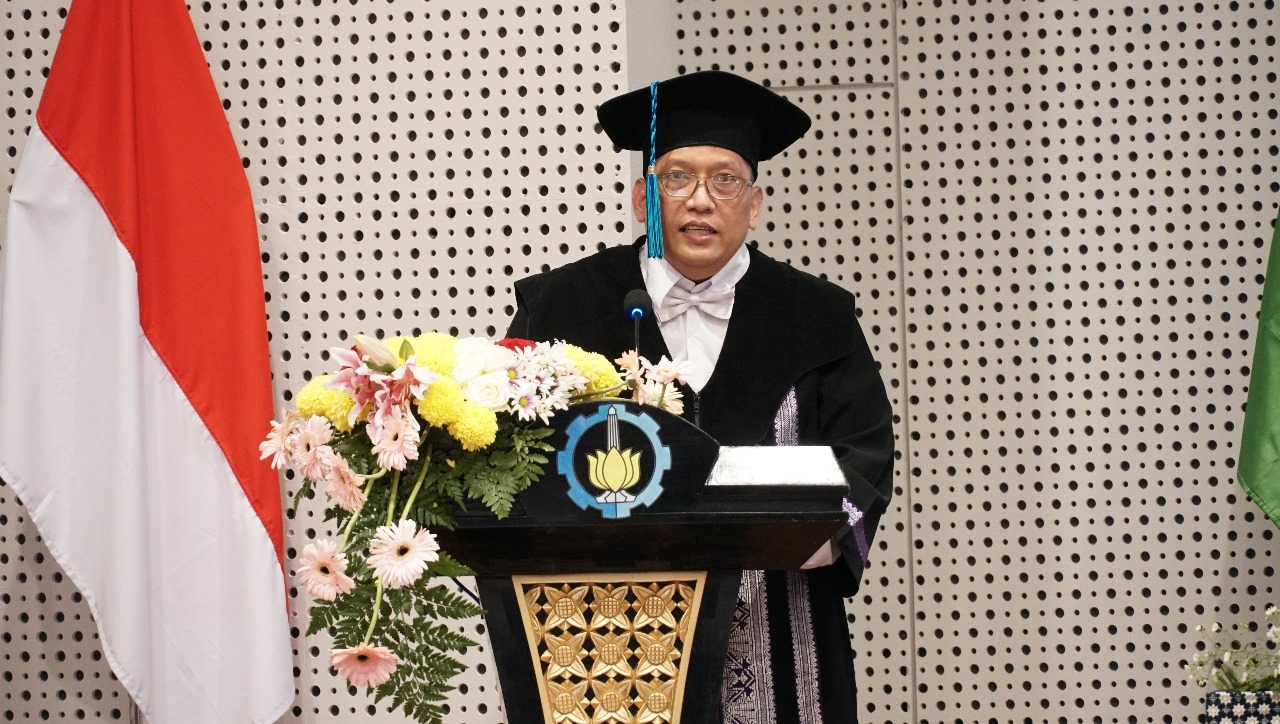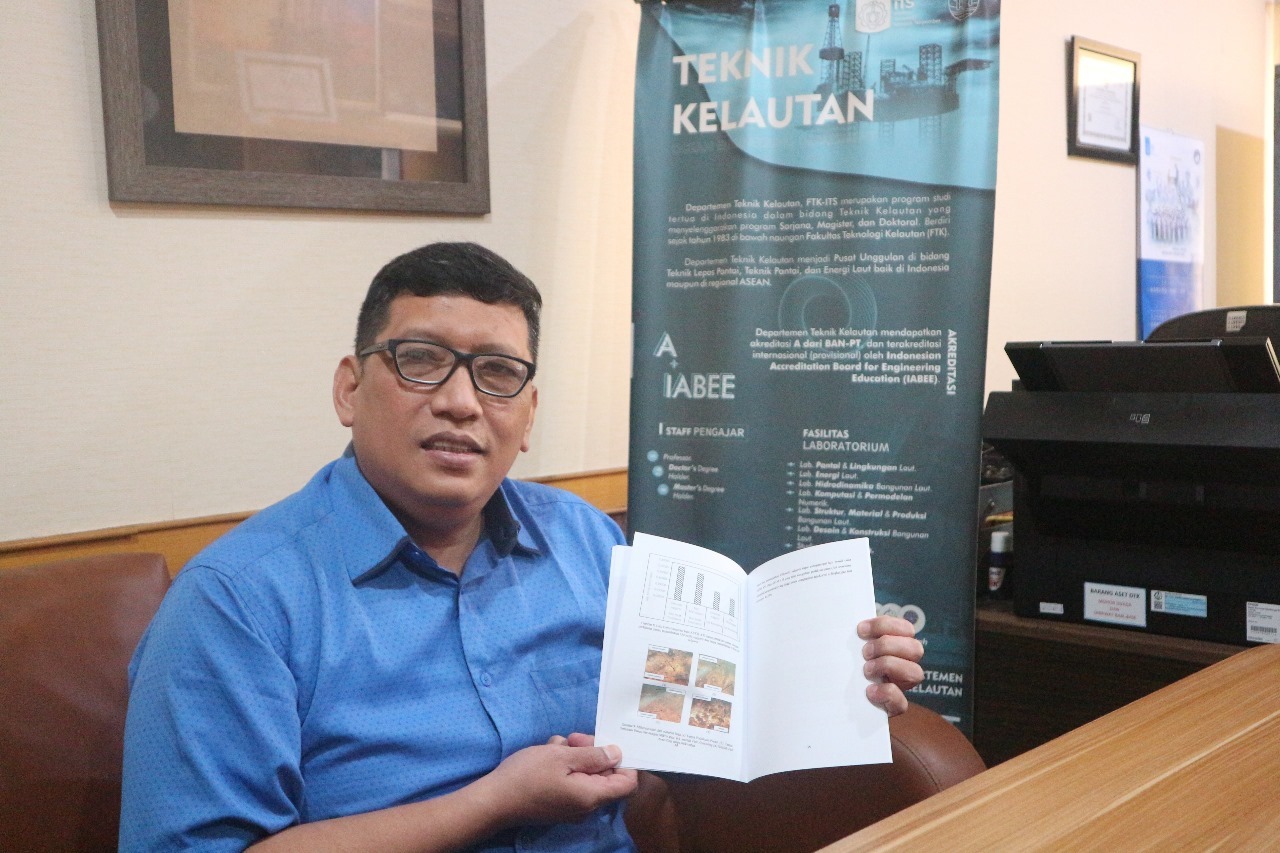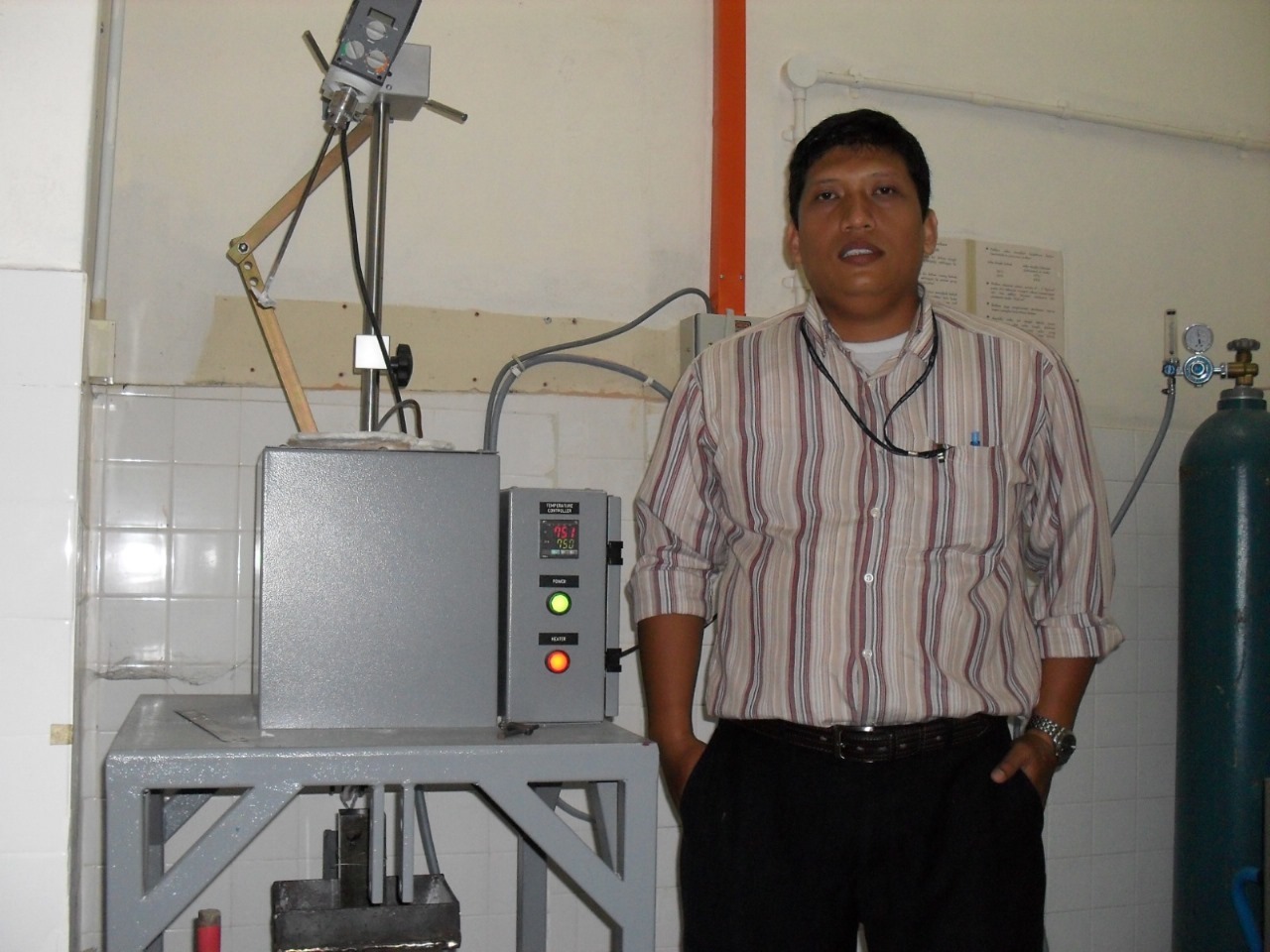ITS Professor Ideas for Bio-Corrosion Control in Marine Structures

Prof. Herman Pratikno ST MT PhD delivering a scientific oration for his inauguration as ITS’s 199th professor
ITS Campus, ITS News — Coastal and offshore buildings interacting directly with seawater trigger damage, including bio-corrosion. If not addressed immediately, the structure’s service life will not last long. Based on this, one of the professors at Institut Teknologi Sepuluh Nopember (ITS), Prof. Herman Pratikno ST MT PhD, initiated the idea of controlling bio-corrosion in marine buildings by improving materials using the Heat Treatment method.
In the beginning, Herman explained that coastal and offshore buildings are generally made of metal, making them susceptible to corrosion. On the other hand, bio-corrosion in marine building materials damages a material due to the attachment of microorganisms to the structure. The high salinity of seawater triggers an acceleration of bio-corrosion. “Therefore, to prevent structural damage, we need a way to control bio-corrosion,” he said.
Furthermore, this 199th ITS professor said that controlling bio-corrosion can be done by improving the material’s mechanical properties. One of those methods is the heat treatment process. This treatment aims to change the properties of the metal through a heating process, thereby producing the desired metal properties and hardness. “Then a corrosion test was carried out with artificial seawater to measure the corrosion rate of each material,” he added.

Prof Herman Pratikno ST MT PhD, explaining the results of bio-corrosion experiments on materials that have gone through a full annealing heating process
In the research outlined in his inauguration scientific oration as ITS professor, Herman carried out four heat treatment tests. The first test was carried out with hardening heat treatment. With a temperature of 845 Celsius, the metal was heated within 15 minutes. Then, rapid cooling was carried out with water until the metal hardened. Normalizing heat treatment was then carried out at the same temperature and time. “The only difference is that it is cooled using unconfined air outside the heating kitchen,” said the man born in Surabaya.
In greater detail, the Head of the ITS Ocean Engineering Department added that the heat treatment on the third sample was carried out with full annealing. This method is almost the same as the second method; only the metal is cooled with free air in a heating chamber—lastly, austempering heat treatment. With the same temperature and time, the metal is heated and then cooled with salt balt at 300 Celsius within 60 minutes.

Prof Herman Pratikno ST MT PhD with equipment for material heat treatment experiments
From the four heat treatment methods, the material hardness obtained from highest to lowest in the sequence is hardening, austempering, normalizing, and full annealing. Then, a corrosion test was carried out using artificial seawater with a salinity of 3.5 percent, and a type of algae was added. “Chlorella vulgaris was added, which aims to assess the corrosion rate of the material,” explained this ninth professor of the ITS Ocean Engineering Department.
The results also showed that of the four metal samples that had been given heat treatment, the metal resulting from full annealing heating gave significantly better results. The metal corrosion rate with heat treatment decreased by 46.58 percent. “This result is much better than the metal corrosion test without using algae,” he said.
Through the satisfactory results of his research, this man, who was inaugurated as a professor at the same time as his wife, hoped that improving materials through heat treatment could be an alternative to inhibiting the occurrence of bio-corrosion. “With this, the structure’s useful life can be extended and better support the national maritime sector,” said Herman hopefully. (ITS Public Relations)
Reporter: Nabila Hisanah Yusri
Translator: Lael Alphenos Soebakir
Related News
-
ITS Develops Four‑Legged Dog Robot with Sensors and Navigation
ITS Campus, ITS News – Institut Teknologi Sepuluh Nopember (ITS) is further solidifying its role in robotic technology
April 05, 2024 06:04 -
ITS Mathematics Alumnus Creates EEG-Based Brain Research Technology
ITS Campus, ITS News — One of the graduates of the Institut Teknologi Sepuluh Nopember (ITS) has succeeded in
April 05, 2024 06:04 -
ITS Promotes FAST-D Scholarship, Unggul, and Global Excellence Scholarship
ITS Campus, ITS News – Institut Teknologi Sepuluh Nopember (ITS) always shows its commitment in supporting students to develop their best
April 05, 2024 06:04 -
Supporting the Implementation of SPMB 2025, ITS Develops the SENOPATI Platform
ITS Campus, ITS News – Showing its contribution in the field of education, Institut Teknologi Sepuluh Nopember (ITS) has redeveloped a platform
April 05, 2024 06:04
